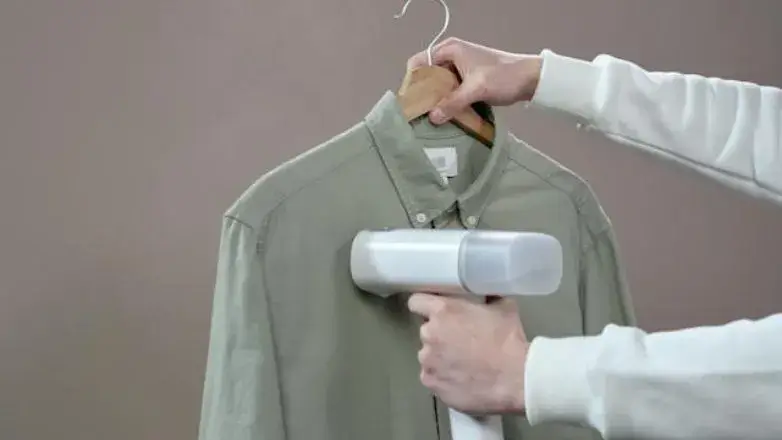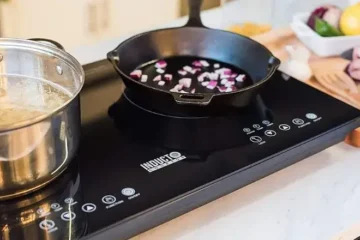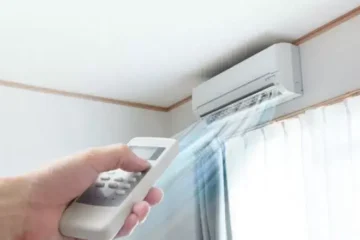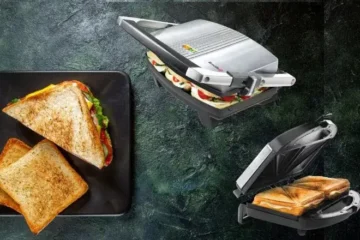The finest clothes steamer is a steaming appliance that is used to smooth out wrinkles in garments and prepare them for any event. It converts water to steam. This is then applied to a wrinkled piece of fabric. The steam loosens the bonds in the fabric’s molecules, making it easier to remove wrinkles.
There are two types available. The portable or compact steamer is better for traveling. It is also preferable to have a regular, full-sized steamer at home if space is limited. The compact model provides approximately 15 minutes of steam per fill and may be useful when traveling or when the number of clothes to be treated is limited.
The larger variety takes up more space, can handle more clothes, and eliminates wrinkles much better than the portable ones. Again, there are professional and consumer options available. However, when choosing the right product, the features and characteristics of a steamer are more important than the price.
Table of Contents
How to use a Steamer to Iron Clothes?
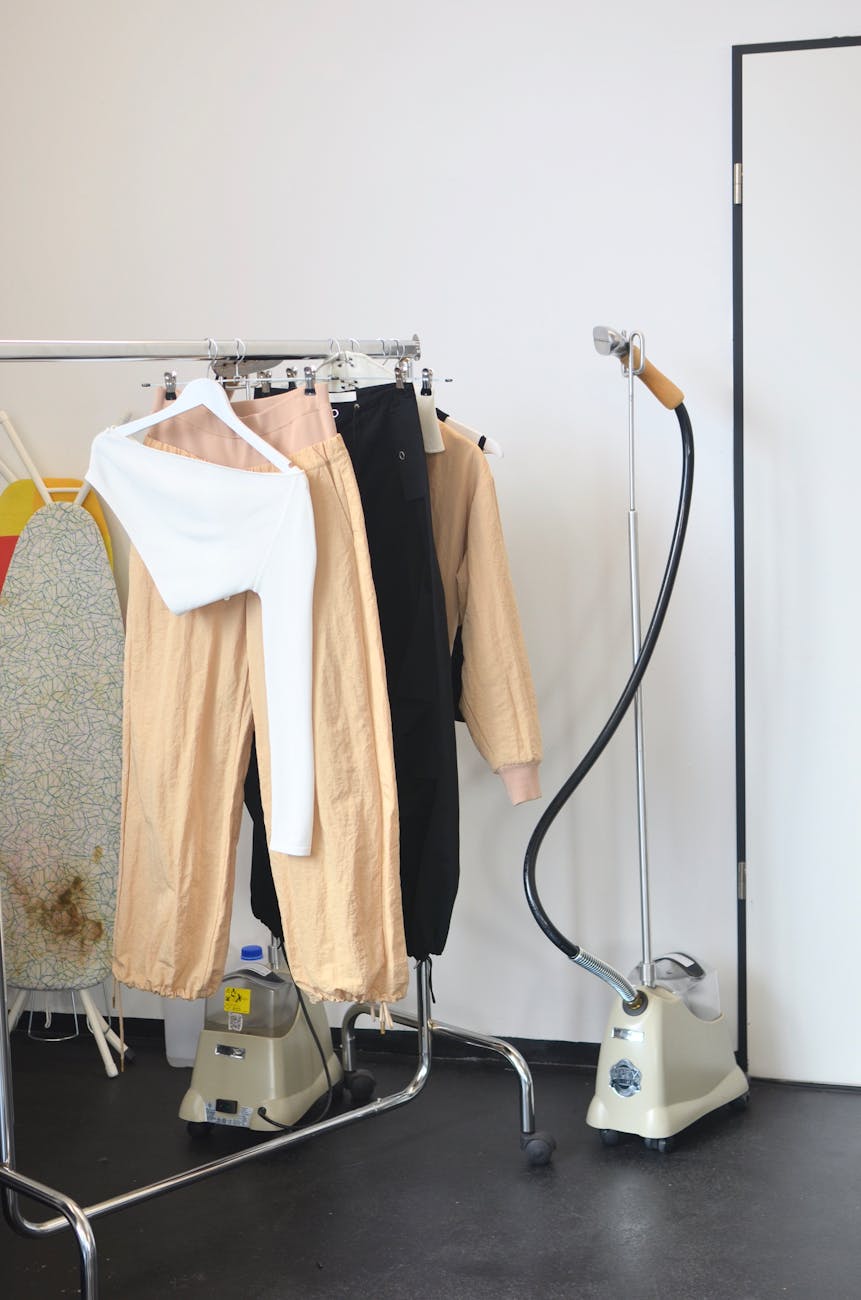
A steamer is a metal rod that is usually quite long. It also has a heating element, a water tank, and a rubber hose with an attached brush for removing lint and hair from fabric. Water is poured into the tank and allowed to boil until it turns to vapor. The rubber hose is then used in delicate sweeping motions to apply steam to the wrinkled fabric.
Garments are hung from a rod or hanger to ensure that the steam is applied evenly. For transporting, the smaller steamers have water tanks attached to blowers, with no connecting rods or hoses.
The amount of time it takes to smooth out clothes and remove wrinkles is largely determined by the type of fabric and the number of wrinkles. Dense fabrics, such as polyester and denim, will take longer to remove wrinkles than less dense fabrics, such as linen and cotton. Porous fabrics can be wrinkle-free in a matter of minutes, whereas denser fabrics take much longer.
The time it takes to smooth out fabrics is determined by the heat generated by the steamer as well as the strength of the stream of steam it produces. Portable steamers have lower wattage heaters than heavier steamers and take longer to loosen fabric bonds. The amount of steam generated is proportional to the size of the water tank, with larger tanks producing more steam.
As a result, a steamer with a large tank can be used for multiple garments. Some steamers can take up to 15 minutes to generate the appropriate amount of steam, while others can take much longer. When choosing a product, this is an important factor to consider.
Another feature is the temperature of the steam. The higher the temperature, the easier it will be to smooth out stubborn wrinkles. The higher wattage of steamers determines their ability to generate more heat and steam temperature, but this is not always true because higher wattage sometimes just consumes more electricity without performing the job efficiently.
Using an Clothes Steamer or Iron?

It is up to you whether to use a clothes steamer or an iron. Ironing clothes restore their crispness and sharpness, whereas using a steamer removes wrinkles. The fabric handled also influences the choice of a steamer or iron.
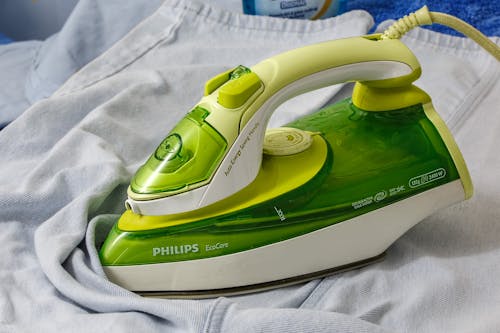
A steamer soothes and relaxes the fabric while an iron flattens creases and wrinkles. There is no risk of scorching or burning the fabric with a steamer, as there is with a hot iron. Steaming is also a gentler way to treat fabrics like satin, silk, velvet, and wool, which are difficult to iron in the first place.
It also contributes to the longevity of delicate fabrics. Steamers can treat car upholstery, drapes, and leather products. Bakers sometimes use steamers to attach decorative icings to baked goods and keep cakes from sticking to baking pans.
Which is The Best Clothes Steamer?
To get the best results, we need to get the best clothes steamer. It will be relatively easy to use, will heat up quickly, will be compact, will be able to remove wrinkles quickly, should be faster than ironing, and should be reasonably priced.
It should also be safe to use, as well as durable, and sturdy enough to last a long time. Buying the best clothes steamer is a one-time investment that should be done wisely after considering various factors.
There are various models available, with some having control panels to select the duration of steam to be applied to the fabric based on its type, and others having built-in hangers and being collapsible to save space. Again, the decision is based on personal preference and requirements.
What is the Best Clothes Steamer to Buy?

The intended use of a clothes steamer is a major deciding factor when purchasing one. The portable models are compact and ideal for people who travel frequently or need to attend meetings and conferences on short notice.
They are easier to carry and pack, but they cannot generate enough steam at a high enough temperature to do the job effectively. They simply do the job and ensure that it is done well, if not excellently.
If ‘on-the-go is not a criterion for selecting a steamer, then one that is sufficiently compact while providing a hot, continuous, and strong stream of steam is preferable. These steamers are available in 800-watt power ranges do the job just as well.
When choosing a compact portable model, the water tank of the steamer is an important factor to consider. A smaller tank necessitates more refills. The opening for filling the tank with water must be large enough so that refilling does not become a messy task, with water pouring outside and wetting other clothes.
For people planning to travel abroad, the voltage available on the steamer should be adaptable to the country of travel, and dual voltage versions of the steamers are preferable to conventional single voltage models.
Home clothes steamers are usually medium in size, but they have the same selection criteria as portable ones. These steamers frequently include an in-built hanger with rollers, as well as a larger water tank with a higher wattage heater to produce more steam at higher temperatures. These are frequently user-friendly and can be easily used by a single person.
Larger clothes steamers, which can hold a gallon of water in their tanks and have a power rating of 1500 watts or more, are more commonly purchased by designers and dry cleaners. The selection criteria for these steamers are similar to those for portable and home steamers.
What are Clothes Steamers used for?
Steamers are classified into two types: portable and home/industrial. When choosing the home variety, which can handle more clothes and a wider range of fabrics than the portable one, the following specifications and features should be taken into account before making a purchase:
Power
Power is represented by the steamer’s wattage. A higher wattage unit will allow the steamer to heat the reservoir water more quickly. Increased power also improves steam output, allowing you to steam a larger quantity and a wider range of clothes. However, removing wrinkles from denim may be a more difficult task for low-wattage steamers.
Capacity of Reservoir
The amount of water stored in the reservoir determines how long the steaming process takes and how many garments can be steamed. This is useful when a large number of clothes need to be steamed.
Time to heat up
The time taken to heat up is important for people who do not want to wait long to steam their clothes. When selecting a steamer, keep the advertised heat-up time in mind. The most recent models provide steam in under a minute.
Time to steam
The time required to steam is determined by the size of the tank’s reservoir and the wattage of the unit. A higher wattage ensures that it takes less time to heat up, but it also dries out the water reservoir faster. To strike a balance between the two, a larger reservoir with a high wattage must be chosen to reduce the time to steam while not drying out the reservoir too quickly.
Unit Portability
The steamer must be portable if it is to be moved from one corner of the room to another. The dimensions and weight of the steamer are important considerations. If portability is a concern, steamers with mountings such as wheels or slides may be chosen.
Storage
The steamer should be simple to store. Some steamers include hangers inside to hang clothes while steaming, making them taller. Some of these steamers are also collapsible for storage convenience. The majority of them are narrow and can be stored in a room corner. Before purchasing a steamer, it is critical to consider where to keep it.
Length of Cord
The length of the cord is an important factor in determining the steamer’s proximity to the power source. If there aren’t enough plug points, a longer cord is required for efficient steaming. Extension cords are not recommended for high-powered devices such as the clothes steamer and should be avoided at all costs.
Apart from the essential specifications and characteristics listed above, the following are some of the features to consider when choosing the right one.
- Garment hangers, Some of the most recent steamers include garment hangers for hanging garments within them. This eliminates the need to hang them somewhere else, such as a door frame or within a closet.
- Lint that is exposed when ironing can be removed with a fabric brush, which is included with some new steamer models.
- The manufacturer’s warranty and its duration must be carefully noted, a longer warranty period ensures lower maintenance costs. The steamers are covered by warranties ranging from 90 days to 5 years, with a one-year or longer period being ideal.
Read Also: Centrifugal vs Masticating Juicer – Which is Right for You?
Conclusion
Not only do clothes steamers save garments, but they also keep upholstery and drapes looking clean and nice around the house. So, before choosing the right one, consider the steamer’s suitability for the intended use. There are standing steamers, travel steamers, and handheld steamers to choose from. Standing steamers are the most common and are typically used in homes and laundries, whereas travel and handheld steamers are appropriate for people on a tight budget or who travel frequently.
Steamers must operate at 120 volts when used in the United States, but dual voltage steamers are preferred when used outside. When traveling outside of the United States, an adapter is required to plug the steamer into a power socket whose layout may differ from the adapter supplied with the steamer. Size and weight are also important factors in determining the steamer’s location and portability.
The steamer’s grip must be comfortable for ease of steaming and when used for extended periods. Before purchasing one, it is always a good idea to check the grip and see if it is comfortable. Foldable grips are preferable to fixed grips because they avoid damage in transit, as well as injury to people walking around it and interference with movement in its vicinity if it protrudes from the body of the steamer.
The cord’s length is also an essential factor to consider. A longer cord makes it easier to reach upholstered furniture and window drapes. This eliminates the need to move the steamer or the items. Auto power cut-off is also a useful feature if the tank is not refilled before it dries out. This prevents the unit from overheating and cuts off power to the steamer when it reaches a predetermined temperature.
The water tank must have a sufficient capacity and is primarily determined by the needs of the steamer. A larger reservoir allows for continuous steaming without the need for frequent water refills. The ease of refilling the tank should also be considered, and a removable tank that can take water from a kitchen tap and has a large opening is preferable to the fixed variety.
Thermally insulated steamers are preferred over non-insulated steamers to avoid burns to those handling them. Steamers will become heated during use because they operate on the principle of generating enough heat to form steam, so purchasing one with proper thermal insulation is also an important factor to consider.

